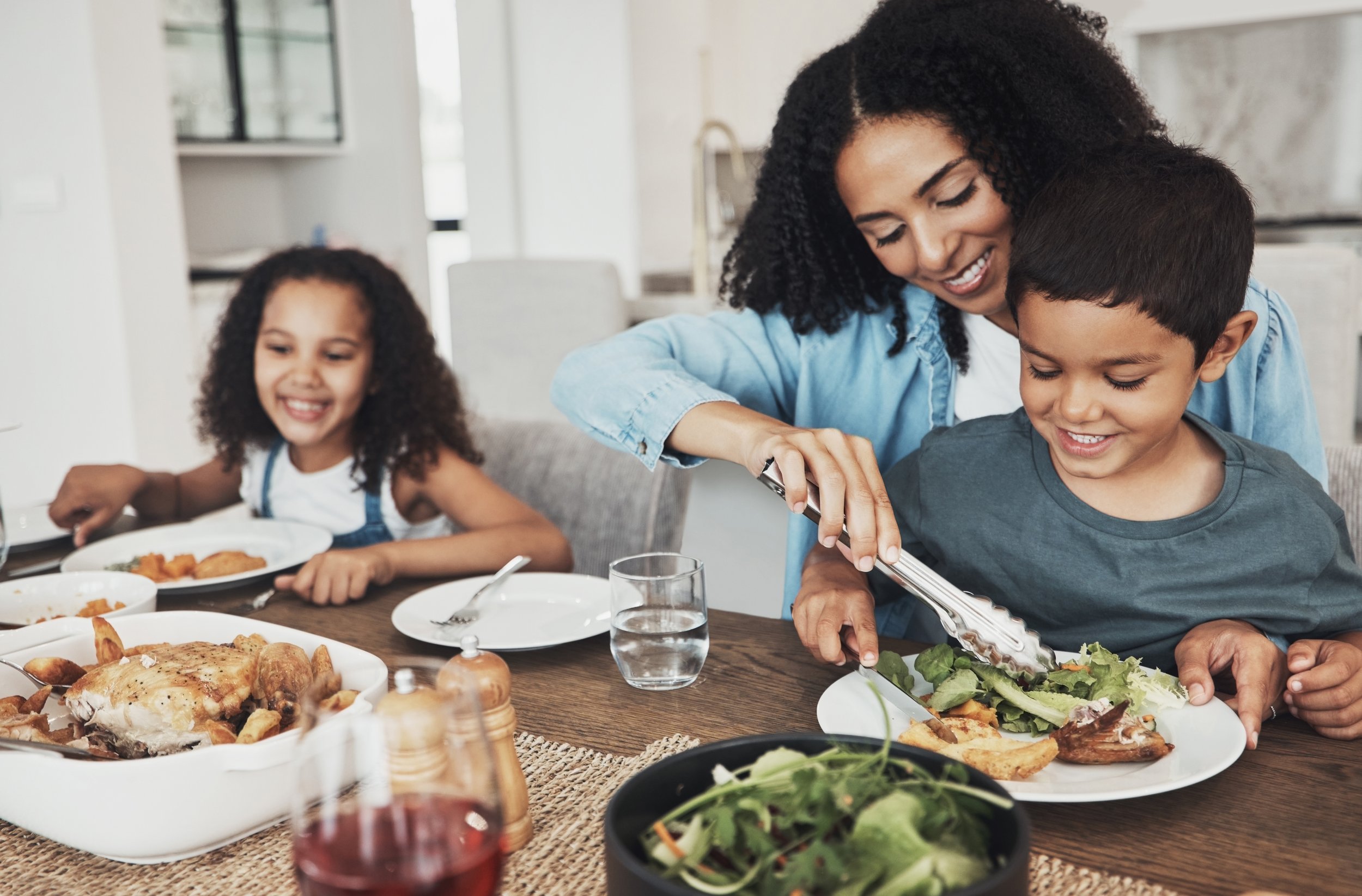Eating in the Home
Adobe Stock
We all have a connection with the food we share with our friends, loved ones, and society.
Food is something that also characterizes the culture and history from which we come; this involves traditions, rituals, and symbolism and envelops us with its ingredients, smells, flavors and colors. Food is not just the act of eating; it comes from the hands of those who collect the food, those who clean it, process it, package and transport it. It is also the moment when you go to the supermarket to choose it, and when you store it at home and plan your menu. It is the energy with which you cook it, you serve it and finally bring it to your mouth and receive its energy and nutrients to live and thrive.
For most of us, our first moments after we are born involve food. You meet your mother outside the womb and she feeds you. Here begins our connection to food. The relationship we build with food is important, and it is learned and strengthened at home.
How to Develop a Strong Relationship with Food
Create a pleasant atmosphere during meal times. Eat at the table, connecting with family, having pleasant communication.
Prepare food with presence. Be present in the moment, step-by-step, enjoy cooking either alone or with company.
Involve the children in the trip to the supermarket and in the preparation process. The trip to the supermarket can be a moment to connect with your family, to relax from the stresses of everyday life, a moment that can be enjoyed. Ensure you and your children are not hungry, so you don’t fall for foods that cause instant gratification but are absent of nutrients.
From an early age, your little ones can be involved in preparation in the kitchen; let them explore the textures and use their hands. This gives them security in themselves.
Do not separate foods as “good” and “bad.” Instead, get to know them from their nutritional value, moments, and genuine pleasure.
By categorizing food as good or bad, we create a window to unhealthy habits and eating disorders such as bulimia, anorexia and binge eating.
Learn what foods provide you with or lack: animal/vegetable protein, simple/complex carbohydrates, healthy/saturated fats, vitamins, minerals, fiber, etc.
If you have a craving for some food that does not provide you with nutrients, think, “Well, I will choose to have my nutritious meal of the day first, and then I will see if I continue with that craving.”
Eat without distractions. Limit or decrease being in front of a screen while eating. Eating in front of the TV or cell phone takes away the opportunity to taste the food and recognize our signs of satiety. It also increases the likelihood of eating very quickly without chewing food well.
Be present at meal time and involve all your senses. Taste, sight, touch, smell and hearing.
Respect the signs of hunger and satiety. Stop eating when you are satisfied, and respect children’s signals. Don’t force them, or yourself, to finish eating what is on the plate.
Avoid making comments about how others eat.
Teach your children through your example.
Now, let’s move on to the million-dollar question.
How Do I Eat?
We need to learn to feed ourselves consciously.
Each and every one of us is born with the ability to self-manage our food intake, but with the passage of time we learn to distrust and disconnect from our body and signs of hunger. The good news is that we can reconnect with these innate skills.
Look at babies when they’re hungry. They cry to be fed, but when they’re satiated, they withdraw from the nipple and no longer open their mouths. This is the purest example of our natural connection to hunger and feeding.
I want you to imagine the following scenes:
In a movie, a woman has had a bad breakup, and she eats straight from a large container of ice cream.
When you were a kid and you cried, an adult soothed you by taking you for ice cream or candy.
When you got good grades you were rewarded with your favorite treats.
You were sitting at the table and told you couldn’t get up until you finished your whole dish.
These scenes are the ones that have taught us to disconnect from our body and to relate to food as a sedative and substitute for our emotions.
To learn to eat intuitively, we have to learn to identify when we are feeling emotional and reaching for food as a pacifier. Remember this the next time you “feel hungry” and pause for a moment to ask yourself if it is physical hunger or emotional hunger. Each person is different, so your signs of real hunger vary, but some of these signs could be headache, dizziness, irritability, and stomach noises, among others. The primary characteristic of this physiological hunger is that it allows us to postpone it. It increases little by little and does not need to be satiated immediately, unlike emotional hunger, which can cause us to feel anxiety and / or urgency to eat. It also comes with a certain type of craving — something specific. Furthermore, after eating emotionally and compulsively, we may experience guilt or shame.
In the end, the healthiest act you can take for your body and your relationship with food right now is just to start paying attention to your habits. Don’t shame or blame yourself for eating emotionally; just recognize when you’re doing it. Don’t limit your food intake; just be aware when you’re having anxiety over food.
As you become more aware and more present with your food, you will find yourself reaching for nourishing foods that make you feel good in the long term. As for those emotions you’re soothing with food, trust yourself to find more productive ways to work through them.

